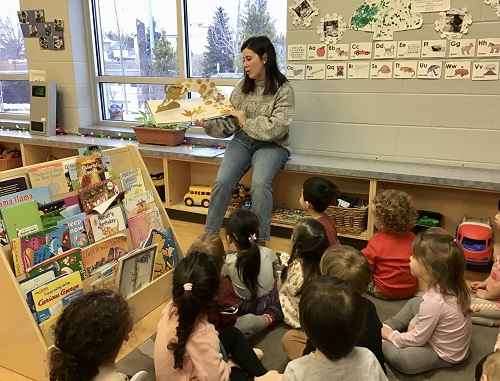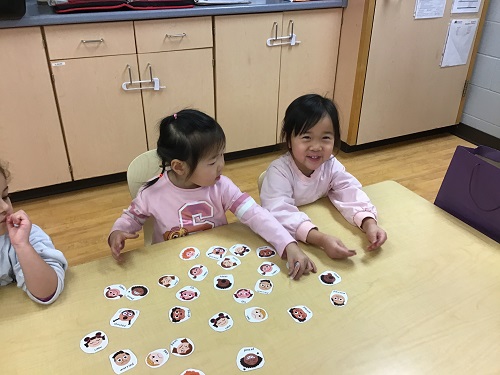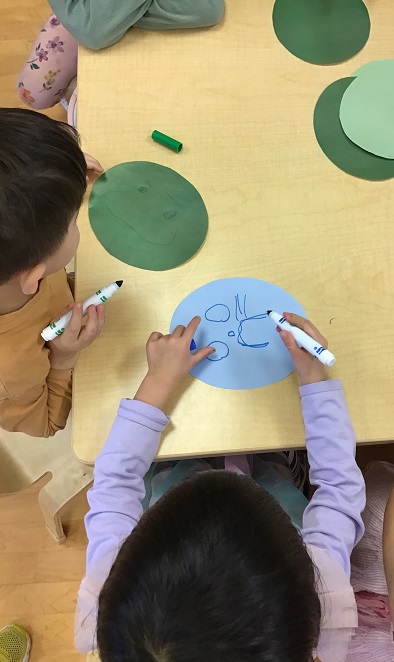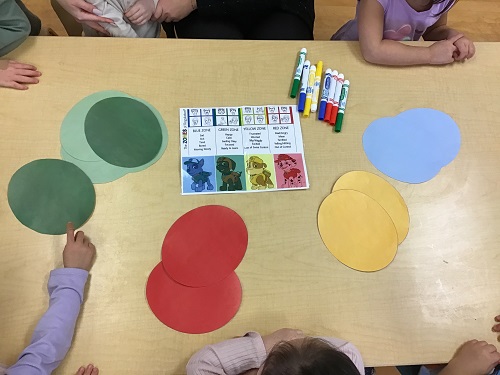Over the past few months the preschool educators have been implementing Zones of Regulation program in the classroom by providing visuals, reading stories and encouraging open ended questions when situations arise in the classroom, including emotions. Some of the questions are,
How would you feel if ….?
How does it make you feel when ….?
How do you think that made them feel...?
As educators we have observed the children naturally sharing their emotions with their peers as we’ve begun exploring the different Zones through everyday learning. As educators we feel it is very important to help teach, identify and share the different Zones of Regulation to encourage self-expression, explore positive relations with all emotions and share different ways to cope. Weather that's happy, sad and anything in between.
We have observed an greater amount of children expressing themselves and having others reciprocate the feeling and respond. The preschoolers have been showing an increased amount of understanding in well- being and empathy towards their peers while implementing problem solving skills and showcasing self-regulation through daily exploration.
“Ceci, I’m so happy to see you,” Moyosola shared as she hugged Ceci. “Ouch, that hurt my foot,” one peer shared to another. “I’m sorry, are you ok? It was an accident.” The peer replied.
We have been reading books like “Howard B. Wigglebottom Learns to listen” and “The Colour Monster,” to continue our exploration. The Preschoolers often ask for the “Howard B. Wigglebottom” book, as it talks about a bunny who is working on his listening skills with different people Howard comes across. While reading the story we discuss with the preschoolers how they think Howard’s peers feel based on how Howard acts throughout the story. This encourages the preschoolers to identify how that could make the children feel if someone did that to them, to help create a better understanding of how different feelings could look to different people.
“The Colour Monster” book has been a great way to introduce many different feelings to the children. The story line goes through the feelings and discusses how to identify them separately to help create an easier understanding of how the monster is feeling. The children show lots of enjoyment in identifying each feeling and often share different experiences or memories they have of their feelings while reading the story.
Exploring different activities to help teach and explore the different Zones of Regulation has created opportunities for the children to work together and identify what feelings belong in the different zones, creating a sense of belonging and encouraging expressive communication to one another.
There are four different colours in the Zones of Regulation
Red – Angry, Panicked, Overjoyed & Terrified
Blue – Sad, Bored, Tired & Sick
Yellow – Silly, Worried Frustrated & Excited
Green – Happy, Proud, Focused & Calm
It was important to start off with the emotions they could identify in a simpler way. Happy, Sad, Angry and Silly, beginning with a solid foundation before we get into some more complex emotions that we will continue to work on over the next few months. The preschoolers showed lots of enjoyment when we created 4 different coloured faces to identify the zones- Red, Blue, Yellow and Green. Going around the table, the children shared how they were feeling. Based on that information they were given a circle representing the zone that they were in. They then got an opportunity to be creative and express themselves to share what that feeling looked like to them. It was a great experience for the children to explore their sense of expression, emotion and begin creating an open dialogue with their peers to share why they may be feeling a certain way. To continue their learning, we’ve created provocations and table activities for the children to explore teacher guided and on their own.
To proceed, the educators have begun creating an area in the classroom with the distinction of each zone and have the children place their names on the chart based on how they are feeling. This will provide a space that the children can come throughout the day and place their name on the zone based on how they are feeling, providing an area to represent their feelings physically and share with peers. We will also continue to explore more emotions and create educational opportunities for the children to continue to explore them through child guided experiences.
